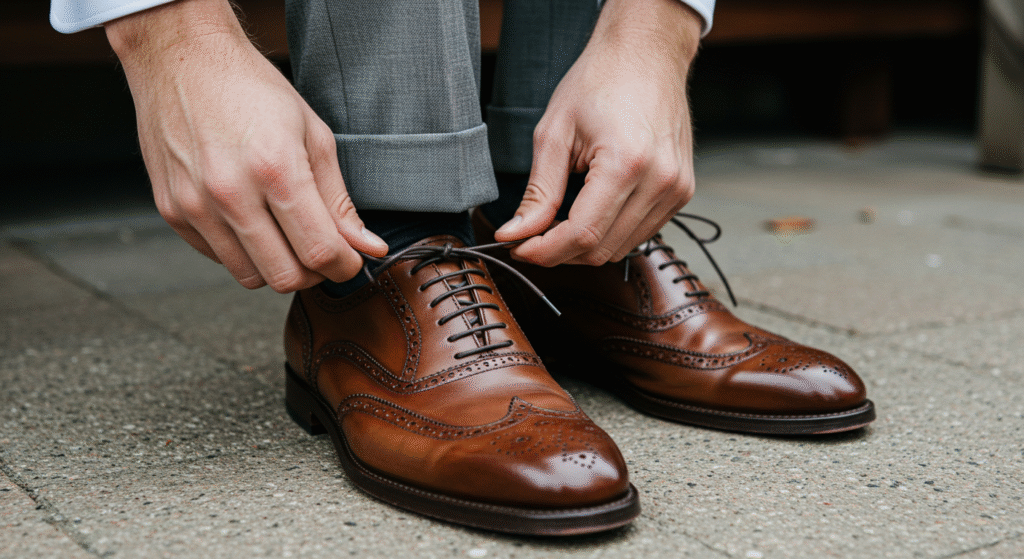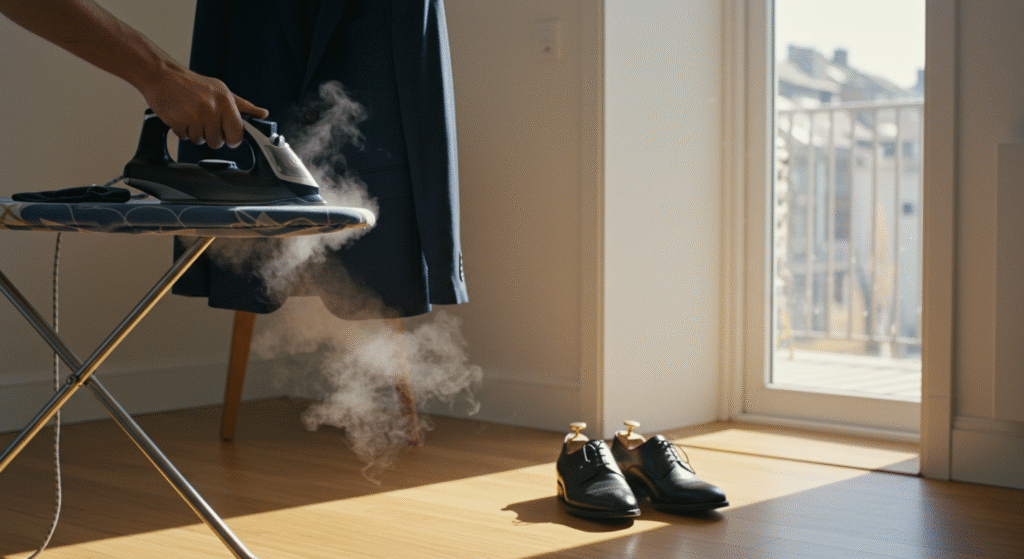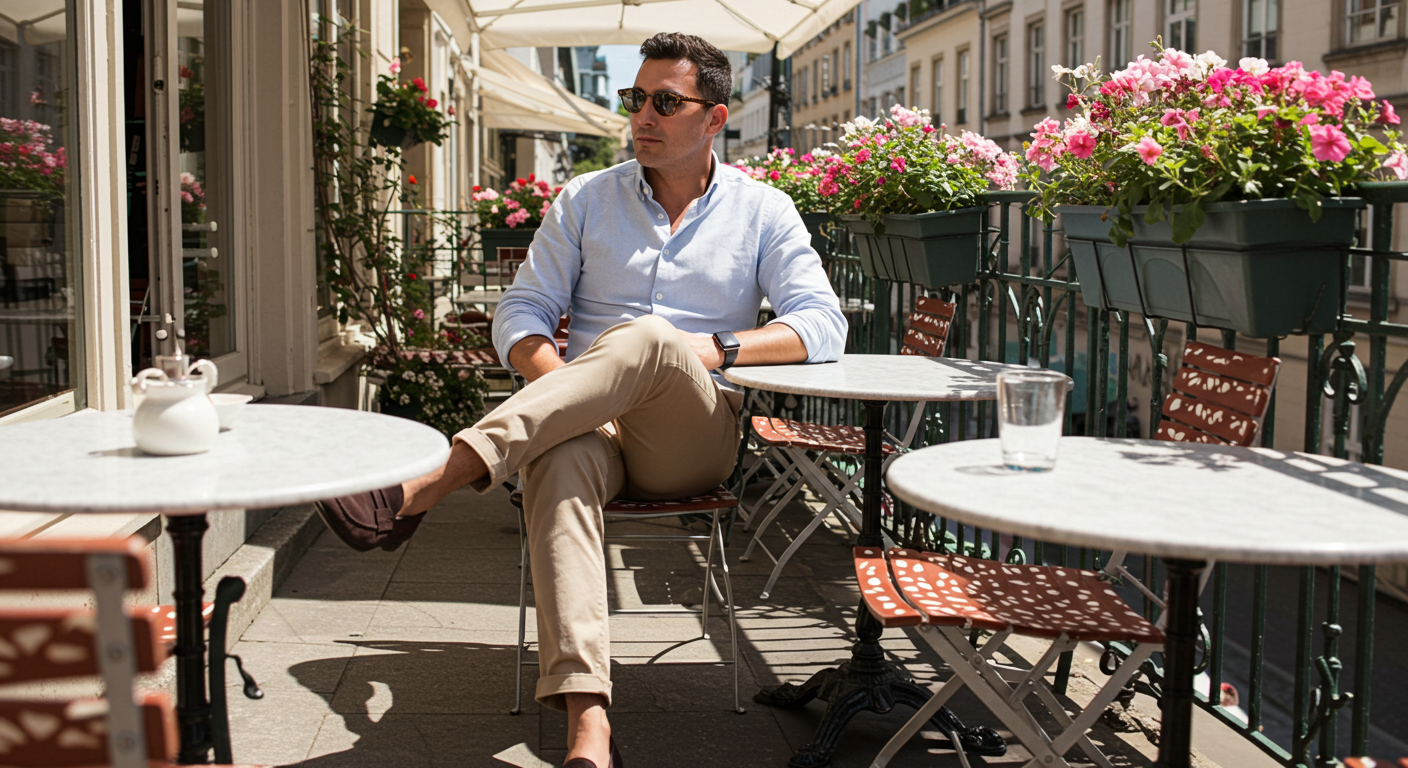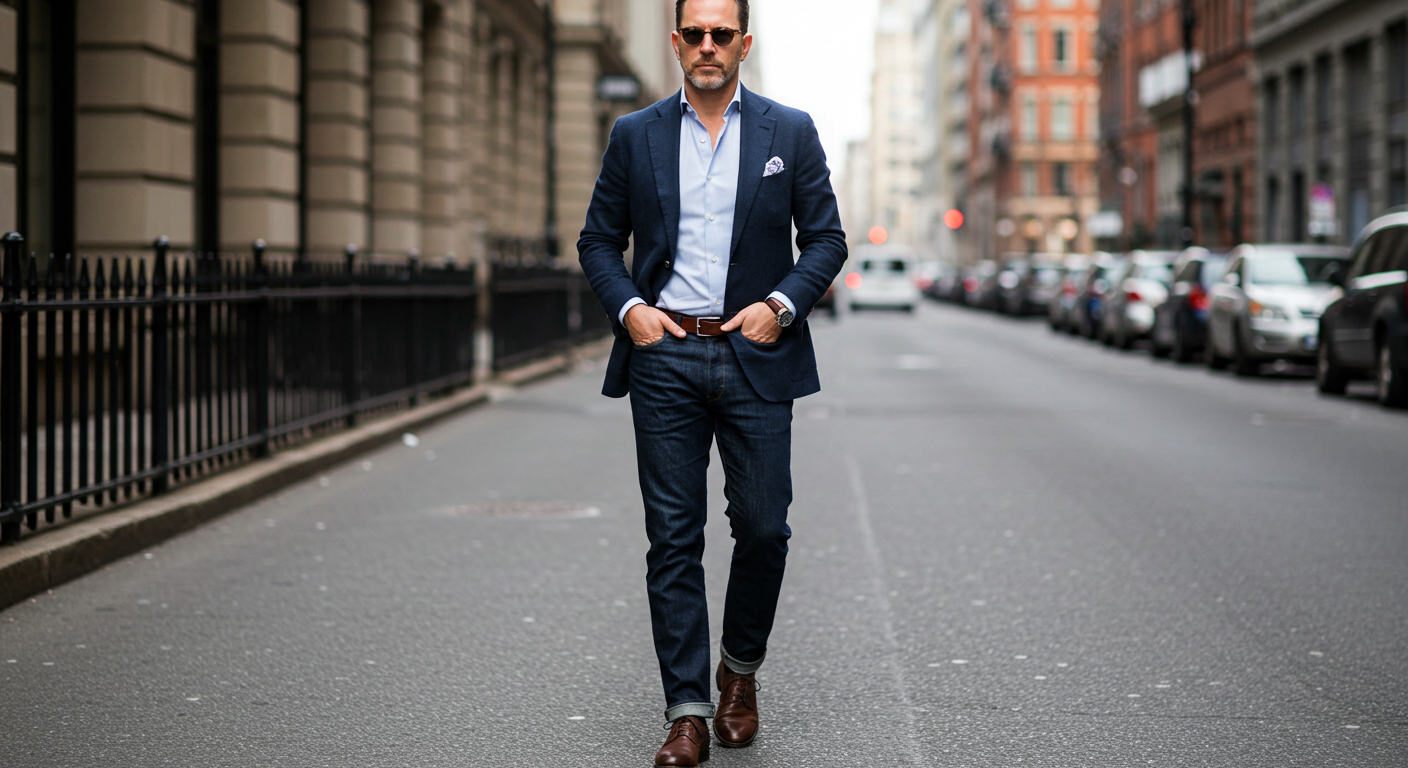The Playbook for Men Who Want Lasting Style
Men’s fashion can feel like a moving target—one season it’s oversized everything, the next it’s razor-sharp tailoring, and somewhere in between you’re told to wear sneakers with a suit. The truth is that great style isn’t about chasing trends; it’s about mastering principles that never expire. This guide lays out ten essential rules that any man—whether he’s a suit-and-tie professional, a creative in denim, or a weekend minimalist—can use to build a wardrobe that looks sharp year after year. You’ll learn how to make fit your superpower, invest in pieces that work hard, and develop a personal uniform that’s as practical as it is handsome. Consider this your no-nonsense, results-driven playbook for dressing well without overthinking every outfit.
Rule 1: Fit Is King—Everything Else Is Secondary
Why Fit Matters More Than the Label
Fit is the difference between looking “put together” and looking like you grabbed the first thing off the rack. The right fit sharpens your silhouette, balances your proportions, and makes even affordable clothes look elevated. A $150 blazer with perfect shoulders beats a $1,500 designer jacket that slouches or pulls.
How to Nail Fit on the Big Three
- Jackets/Blazers: The shoulder seam should meet the edge of your shoulder bone—no divots or ripples. The jacket should contour your torso without pulling at the button. Sleeve cuffs ideally end at the wrist bone, letting 0.5–1 cm of shirt cuff show.
- Shirts: Aim for a clean line through the torso—no ballooning at the sides, no gaping buttons at the chest. If you can pinch more than 2–3 cm at the waist, consider darts or a slimmer cut.
- Trousers/Jeans: The waistband should sit comfortably without a belt. Hem so the fabric “kisses” the shoe—one slight break for dress trousers; no stacking at the ankle for jeans.
Smart Tailoring Moves
Pro Tips
- Shorten sleeves before shortening body length.
- Taper trousers from the knee down for a sleeker line.
- Spend on tailoring for mid-range pieces—it multiplies their value and lifespan.
Rule 2: Dress for the Occasion—Respect the Context

The Golden Rule of Appropriateness
Clothes communicate. They signal that you understand the environment you’re in and respect the people around you. Being overdressed or underdressed can both miss the mark; the goal is to be perfectly pitched for the moment.
Translating Dress Codes Without the Guesswork
- Smart Casual: Think tailored, not stiff: a crisp Oxford shirt, chinos or dark denim, minimalist sneakers or loafers, and a lightweight blazer if needed.
- Business Casual: Swap denim for wool trousers or chinos, add leather shoes, and consider a blazer or knit polo with structure.
- Business/Formal: Navy or charcoal suit, white or pale blue shirt, conservative tie, black or dark brown Oxfords/derbies.
- Black Tie: Dinner jacket or tuxedo, black bow tie, patent shoes, no improvisation.
Pro Tips
- When in doubt, elevate with one item: a blazer, a leather belt, or dressier shoes.
- Pack a “rescue kit” for events—a pocket square, lint roller, mints, and a sleek cardholder.
Rule 3: Quality Over Quantity—Buy Less, Buy Better
Why Fewer, Better Pieces Win
A smaller wardrobe of well-made garments outperforms a closet full of disposable trends. Quality shows up in fabric hand-feel, drape, stitching, and how items age after repeated wear.
What to Look For
- Suits/Blazers: Half or full canvassing, natural shoulder expression, horn buttons, smooth lining.
- Shirts: High-twist cotton poplin or Oxford cloth, tightly stitched seams, sturdy collars that hold shape.
- Knitwear: Merino, cashmere blends, or robust cotton; check for pilling resistance and tight ribbing.
- Shoes: Full-grain leather, Goodyear welt or Blake stitch, resolable soles, leather lining.
Pro Tips
- Track “cost per wear.” That $300 shoe worn 150 times beats the $90 pair that collapses after a season.
- Prioritize touchpoints: shoes, outerwear, bags, and watches. These anchor your look and get noticed first.
Rule 4: Build a Core Wardrobe—Your Everyday “Uniform”
The Power of a Capsule
A core wardrobe reduces decision fatigue, guarantees cohesion, and accelerates getting ready. Start with versatile essentials that pair easily across settings.
The Men’s Essentials Checklist
- Tops: White and light-blue Oxford shirts, quality T-shirts in white/grey/navy, fine-gauge merino crewneck or V-neck.
- Trousers: Dark indigo jeans (straight or slim), navy or beige chinos, mid-grey wool trousers.
- Jackets: Navy blazer, casual overshirt or chore jacket, a lightweight bomber, and a weather-appropriate coat (trench or topcoat).
- Shoes: White minimalist sneakers, brown loafers or derbies, black Oxfords, Chelsea boots or versatile lace-ups.
- Accessories: Leather belt (match shoe color), classic watch, tidy wallet/cardholder, simple scarf in winter.
Pro Tips
- Choose a signature silhouette (e.g., slim-straight trousers + unstructured blazer). Consistency makes styling effortless and distinct.
Rule 5: Master Color—Neutrals First, Accents Second
Why Neutrals Are Your Best Friend
Neutrals—navy, grey, black, white, olive, beige—form the backbone of effortless style. They mix and layer without clashing, making your wardrobe modular.
Building a Cohesive Palette
Pick a base (navy/grey), a supporting neutral (beige/olive), and one or two accent colors (burgundy, forest green). Keep accents for knitwear, shirts, or accessories rather than loud statement pieces.
Tonal Dressing for Instant Sophistication
A navy blazer with a blue shirt and indigo denim, or varying shades of grey, looks intentional without trying too hard. Tonal outfits photograph beautifully and simplify packing.
Pro Tips
- Temperature matters: cool tones (navy/grey) flatter most skin tones; warm neutrals (beige/olive) excel in casual looks.
- Limit accent colors to one item per outfit for balance.
Rule 6: Shoes Make the Outfit—Guard Your Foundation

Why Footwear Carries Your Look
Shoes telegraph taste and attention to detail. Beat-up footwear sinks a suit; polished shoes can elevate denim.
The Four-Pair Rotation That Covers 90% of Life
- White minimalist sneaker for casual and smart casual.
- Brown loafer or derby for business casual and elevated weekends.
- Black Oxford for formal and business.
- Weatherproof boot (Chelsea or lace-up) for colder or rainy conditions.
Matching & Maintenance
Belts should match shoes in color and finish. Use cedar shoe trees, rotate pairs to let them dry, and polish regularly. A cobbler can resole quality shoes and extend their life for years.
Pro Tips
- Upgrade laces and insoles for comfort and a cleaner finish.
- Keep sneaker soles bright with a dedicated cleaner and a soft brush.
Rule 7: Accessorize with Intention—Small Details, Big Impact
The Minimalist’s Guide to Accessories
Accessories should support the outfit, not overshadow it. Think function first, then form.
High-Impact, Low-Effort Additions
- Watch: Steel bracelet or leather strap, classic dial, modest case size.
- Belt: Full-grain leather, simple buckle.
- Sunglasses: Wayfarer or aviator frames suit most faces; buy UV-protective lenses.
- Bags: A slim briefcase or leather tote for work, a sturdy weekender for travel, and a clean backpack for casual days.
- Jewelry (optional): A wedding band, a simple chain, or a signet ring—never all at once.
Pro Tips
- Mirror metals (watch, belt buckle, eyewear) for tidy cohesion.
- Use a pocket square in linen or silk to lift a blazer without screaming for attention.
Rule 8: Grooming & Fragrance—Style Starts Above the Collar
The Often-Ignored Rule
Clothing can’t compensate for messy grooming. Hair, skin, and scent are part of your style—and they often make the first impression.
A Simple, Effective Routine
- Hair: Choose a cut that works with your hairline and texture; maintain a 4–6 week schedule.
- Beard/Shave: Keep edges clean; tone down neck and cheek strays. If clean-shaven, use a soothing post-shave.
- Skin: Cleanser, moisturizer with SPF, and an exfoliant twice weekly.
- Fragrance: Choose a signature scent with woody, citrus, or herbal notes; apply lightly to pulse points.
Pro Tips
- Match your grooming to your clothing vibe. A sharp suit pairs well with a neat beard or clean shave; rugged workwear tolerates a softer, textured hairstyle.
Rule 9: Layering & Proportion—Build Visual Balance
Why Layering Is a Style Multiplier
Layering adds depth and seasonality. Done well, it creates a flattering V-shape, introduces texture, and expands outfit combinations.
The Layering Formula
Start with a breathable base (tee or Oxford), add a mid-layer (merino knit, cardigan, overshirt), and top with structure (blazer, bomber, or coat). Keep the thinnest layer closest to the body and increase weight as you move outward.
Proportion & Silhouette
Balance is everything. If your trousers are straight or relaxed, avoid an oversized top layer that balloons the frame; if you wear a boxy jacket, keep the trousers tailored. Cuff jeans to show a hint of ankle with sneakers; drop the cuff for boots to elongate the leg.
Pro Tips
- Mix textures (denim, wool, suede) within a neutral palette for expensive-looking depth.
- Anchor bold outerwear with simple, tone-on-tone layers underneath.
Rule 10: Care, Maintenance & Consistency—Make Your Clothes Last

The Rule That Protects Your Investment
Great style is a habit, not a one-off decision. Care routines preserve shape, color, and drape, saving money and keeping your wardrobe camera-ready.
Practical Maintenance You’ll Actually Follow
- Laundry: Wash on cold when possible; use mesh bags for knits; avoid over-washing denim.
- Drying: Lay knits flat; hang shirts on wide hangers; keep suits on contoured hangers.
- Storage: Cedar blocks for moisture and moths; dust bags for shoes and leather goods.
- Repairs: Re-hem trousers, replace buttons, and resole quality shoes rather than replacing them.
- Seasonal Edits: Rotate heavy coats and knitwear into breathable garment bags; freshen with a fabric steamer.
Pro Tips
- Create a “Sunday reset”: quick polish for shoes, steam your week’s shirts, lint-roll blazers, and stage outfits. Fifteen intentional minutes prevents rushed, sloppy mornings.
Pulling It All Together: Build Your Personal Uniform
The Confidence Effect
When you apply these ten rules consistently, you create a personal uniform—your reliable formula for looking your best without overthinking. That uniform might be dark denim, a white Oxford, and loafers on weekdays; a navy suit, pale blue shirt, and black Oxfords for big meetings; a tonal knit, tapered chinos, and minimalist sneakers on weekends. Repetition isn’t boring; it’s recognizably you.
How to Evolve Without Losing the Plot
Introduce change in controlled doses. Swap your navy blazer for an unstructured one in hopsack for summer, trade leather soles for rubber lug soles in winter, try a polo under a suit instead of a shirt on casual Fridays, or explore a new accent color through knitwear. Keep the fundamentals—fit, quality, palette—constant while you experiment at the margins.
Common Pitfalls—and How to Dodge Them
Trend Traps
Trend pieces can be fun, but they should be the spice, not the meal. If a trend item can’t pair with at least three things you already own, skip it.
Logo Overload
Brand signaling ages quickly. Subtle branding or none at all looks premium longer and keeps attention on silhouette, texture, and proportion.
“One-and-Done” Mindset
Style is upkeep. Neglecting grooming, skipping shoe care, or ignoring fit tweaks slowly erodes your look. Make maintenance part of your routine.
Quick Start: A 7-Day Capsule Using the Rules
Monday to Sunday, Zero Guesswork
- Mon (Business Casual): Navy blazer, light-blue OCBD, grey trousers, brown derbies, steel-bracelet watch.
- Tue (Smart Casual): Beige chinos, white tee, overshirt, white sneakers, leather belt to match watch strap.
- Wed (Formal): Charcoal suit, white shirt, navy tie, black Oxfords, subtle pocket square.
- Thu (Creative Office): Dark denim, knit polo, unstructured blazer, loafers, slim brief.
- Fri (Casual): Indigo jeans, merino crewneck, minimalist sneakers, field jacket.
- Sat (Date Night): Black jeans, suede Chelsea boots, crisp black or white shirt, leather jacket.
- Sun (Off-Duty): Jersey tee, relaxed chinos, lightweight bomber, clean trainers, sunglasses.
Everything here cross-pollinates. Swap Thursday’s loafers into Monday, move Friday’s knit over a button-down, or layer Tuesday’s overshirt under a coat on colder days. That’s the power of a cohesive palette and disciplined silhouettes.
Final Word: Style That Outlasts Seasons
Great men’s style isn’t complicated. It’s a series of smart decisions repeated consistently: buy what fits (and tailor it), choose quality fabrics and construction, build a capsule of essentials in versatile neutrals, let shoes and accessories do subtle heavy lifting, keep grooming on point, layer with balance, and take care of what you own. Follow these ten rules and you won’t just look better—you’ll feel composed, credible, and ready for anything. The best part? Your wardrobe will finally work as hard as you do.






